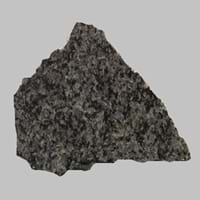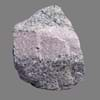Norite Rock
Definition
0
Definition
Norite is a mafic intrusive igneous rock composed largely of the calcium-rich plagioclase labradorite, orthopyroxene, and olivine 0
History
0
Origin
Norway 0
Discoverer
Unknown 0
Etymology
From the Norwegian name for Norway, Norge 0
Class
Igneous Rocks 0
Sub-Class
Durable Rock, Hard Rock 0
Family
0
Group
Plutonic 0
Other Categories
Coarse Grained Rock, Opaque Rock 0
Texture
0
Texture
Phaneritic 0
Color
Dark Grey to Black 0
Maintenance
Less 0
Durability
Durable 0
Water Resistant
Yes 0
Scratch Resistant
Yes 0
Stain Resistant
Yes 0
Wind Resistant
Yes 0
Acid Resistant
Yes 0
Appearance
Veined and Shiny 0
Uses
0
Architecture
0
Interior Uses
Decorative Aggregates, Entryways, Interior Decoration 0
Exterior Uses
As Building Stone, As Facing Stone, Paving Stone, Garden Decoration 0
Other Architectural Uses
Curbing 0
Industry
0
Construction Industry
As Dimension Stone, Building houses or walls, Cement Manufacture, Construction Aggregate, for Road Aggregate 0
Medical Industry
Not Yet Used 0
Antiquity Uses
Artifacts, Monuments, Sculpture 0
Other Uses
0
Commercial Uses
Cemetery Markers, Commemorative Tablets, Laboratory bench tops, Jewelry, Sea Defence, Tombstones 0
Types
0
Types
Not Available 0
Features
Smooth to touch 0
Archaeological Significance
0
Monuments
Used 0
Famous Monuments
Data Not Available 0
Sculpture
Used 0
Famous Sculptures
Data Not Available 0
Pictographs
Not Used 0
Petroglyphs
Not Used 0
Figurines
Used 0
Fossils
Absent 0
Formation
0
Formation
Norite is a fine-grained, hard rock which is a type of metasomatite, essentially altered basalt. It forms with or without crystallization, either below the surface as intrusive rocks or on the surface as extrusive rocks. 0
Composition
0
Mineral Content
Augite, Olivine, Plagioclase, Pyroxene 0
Compound Content
Aluminium Oxide, CaO, Chromium(III) Oxide, Iron(III) Oxide, Potassium Oxide, MgO, Sodium Oxide, Silicon Dioxide, Sulfur Trioxide 0
Transformation
0
Metamorphism
Yes 0
Types of Metamorphism
Cataclastic Metamorphism, Impact Metamorphism 0
Weathering
Yes 0
Types of Weathering
Biological Weathering 0
Erosion
Yes 0
Types of Erosion
Chemical Erosion, Coastal Erosion 0
Properties
0
Physical Properties
0
Hardness
7 0
Grain Size
Coarse Grained 0
Fracture
Conchoidal 0
Streak
Black 0
Porosity
Highly Porous 0
Luster
Not Available 0
Compressive Strength
225.00 N/mm2 7
Cleavage
Not Available 0
Toughness
1.6 0
Specific Gravity
2.86-2.87 0
Transparency
Opaque 0
Density
2.7-3.3 g/cm3 0
Thermal Properties
0
Specific Heat Capacity
Not Available 0
Resistance
Impact Resistant, Pressure Resistant, Wear Resistant 0
Reserves
0
Deposits in Eastern Continents
0
Asia
India, Russia 0
Africa
South Africa 0
Europe
Germany, Greece, Italy, Scotland, Turkey 0
Others
Greenland 0
Deposits in Western Continents
0
North America
Canada, USA 0
South America
Brazil, Colombia, Venezuela 0
Deposits in Oceania Continent
0
Australia
New Zealand, Queensland 0
Information about Norite
Rocks are naturally occurring solids which are composed of minerals & have been used by humans since ages. From Stone Age, rocks are used for various purposes. Also, the metals and minerals found in rock play an important role in our life. Get to know all the Norite Uses. We have provided you with all information about Norite rock here. Norite is a mafic intrusive igneous rock composed largely of the calcium-rich plagioclase labradorite, orthopyroxene, and olivine. Norite is available in dark grey to black colors. The streak of a rock is the color of powder produced when it is dragged across an unweathered surface. The streak of Norite is black. Get to know more about Norite rock and characteristics of Norite rock in the next sections.
|
||
|
||
|









